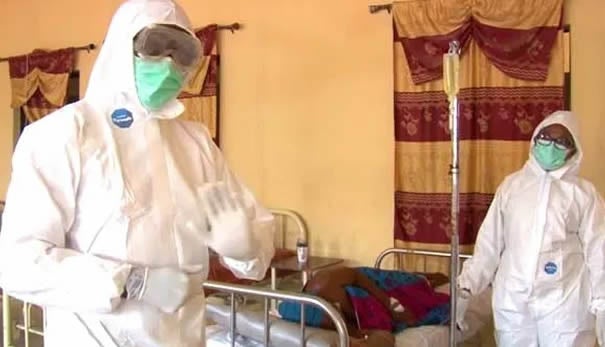The Nigeria Centre for Disease Control and Prevention (NCDC) said 109 lives were lost to Lassa Fever in 22 states of the federation in January 2023.
According to the NCDC, the infections were recorded in 89 Local Government Areas (LGAs).
Lassa fever is an acute viral haemorrhagic fever caused by the Lassa virus.
The natural reservoir for the virus is the Mastomys natalensis rodent, commonly known as the multimammate rat or the African rat.
The agency said that the 22 states include Ondo, Edo, Bauchi, Taraba, Ebonyi, Kano, Benue, Niger, FCT, Cross River, Adamawa, Gombe, Delta, Bayelsa, Kogi, Nasarawa, Oyo, Plateau, Enugu, Imo, Anambra and Jigawa.
According to the agency, the country also registered 676 cases of Lassa fever in nine weeks.
“Between Feb. 27 and March 5, 40 cases and five deaths were recorded in five states and 16 LGAs.
“The states are: Ondo -11, Edo -16, Bauchi has five, Taraba – five and Ebonyi -three,” it said.
The agency further said that five deaths were recorded ; two in Ondo, one in Bauchi and two in Ebonyi.
It noted that 72 per cent of Lassa fever cases in Nigeria were reported from Ondo, Edo and Bauchi, while 28 per cent from two states.
“Out of the 72 per cent, Ondo has 33, Edo 29, and Bauchi 10,” the NCDC said.
The agency further said that cumulatively, from week one to nine, 109 deaths were reported with a case fatality rate (CFR) of 16.1 per cent, lower than the CFR for the same period in 2022 (18.6).
It stated that predominant age group affected was between 21 and 30 years (Range: one to 93 years, Median Age: 32 years) while the the male-to-female ratio for cases was 1:0.8.
“The number of suspected cases increased compared to the same period reporter in 2022. One new healthcare worker was affected in the reporting week nine,” it said
The NCDC added that the national Lassa fever multi-partner, multi-sectoral Emergency Operations Centre had been activated to coordinate response activities.
Other rodents can also be carriers of the virus.
The virus spreads through direct contact with urine, faeces, saliva or blood of infected rats, contact with objects, household items and surfaces contaminated with the urine, faeces, saliva, or blood of infected rats.
It can also be spread by consuming food or water contaminated with the urine, faeces, saliva or blood of infected rats.
Person-to-person transmission can also occur through contact with blood, urine, faeces, vomitus, and other body fluids of an infected person. CONTINUE READING……………………………
THIS IS FOR YOU🤳🏾👨🏼💻
For your Surprise birthday wishes, Business Advert Placement, Publicity Online and offline, Press Release, Social Media Management, For Your Content Writer Plug, Personality Promotion, Special Report, Featured Story, Conference, And Interviews – CONTACT US @VAM on WhatsApp/Call📞@ 08072633727 📲




